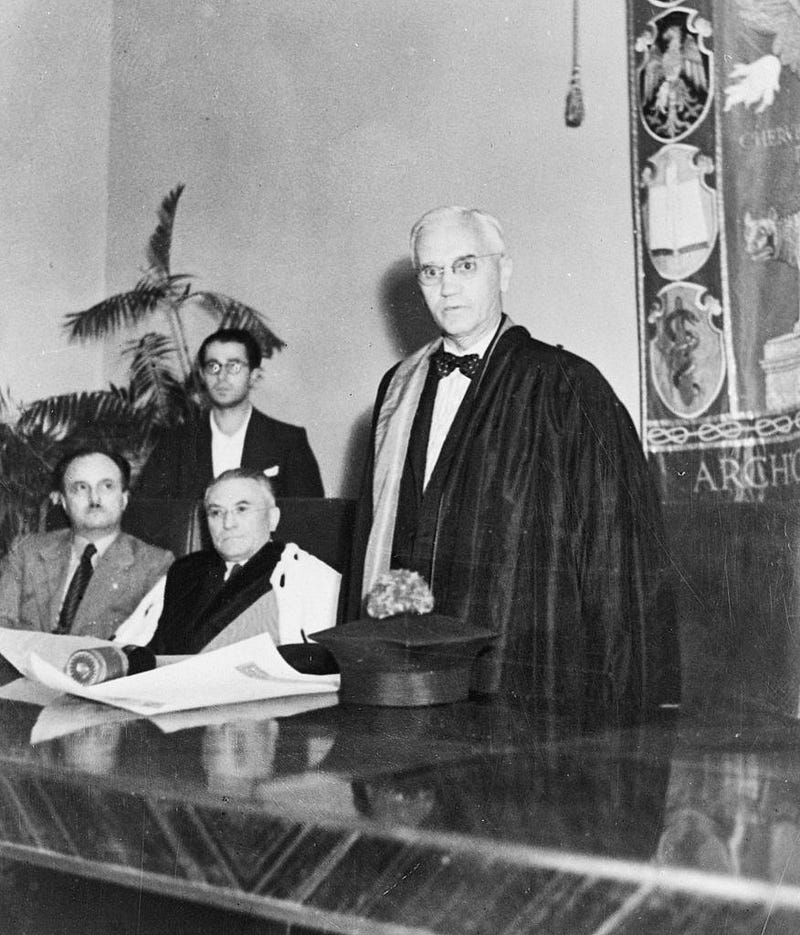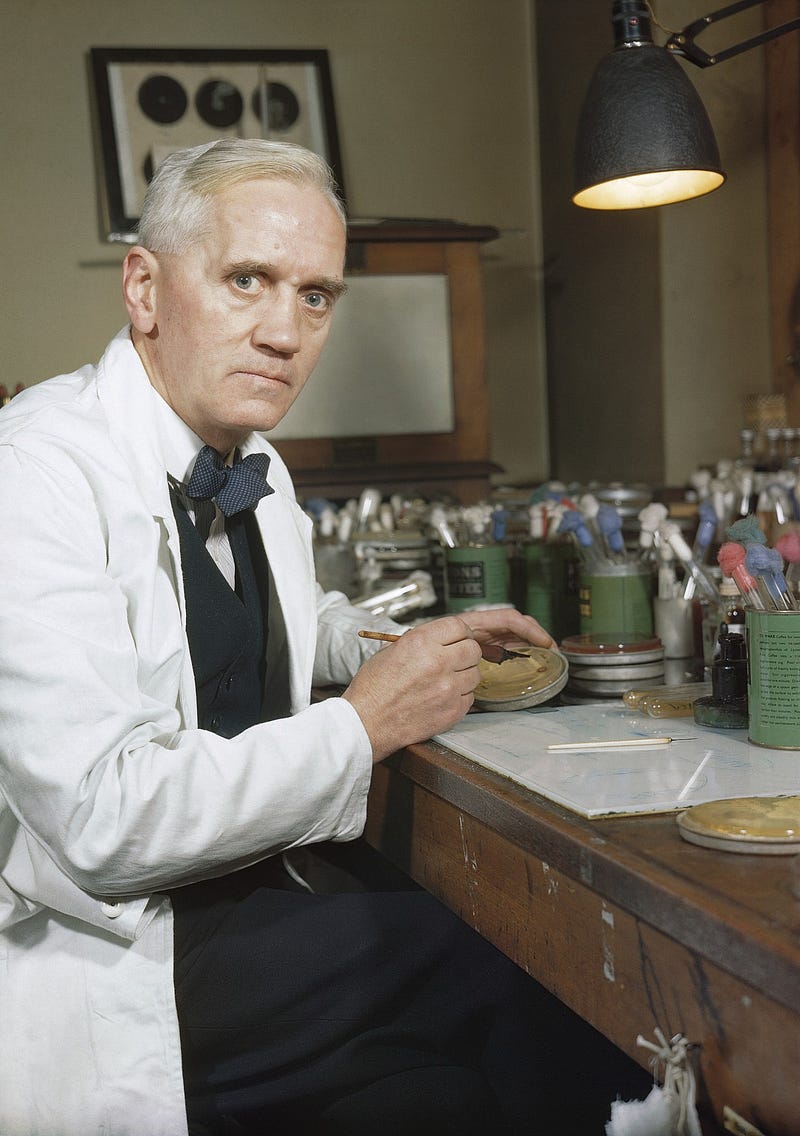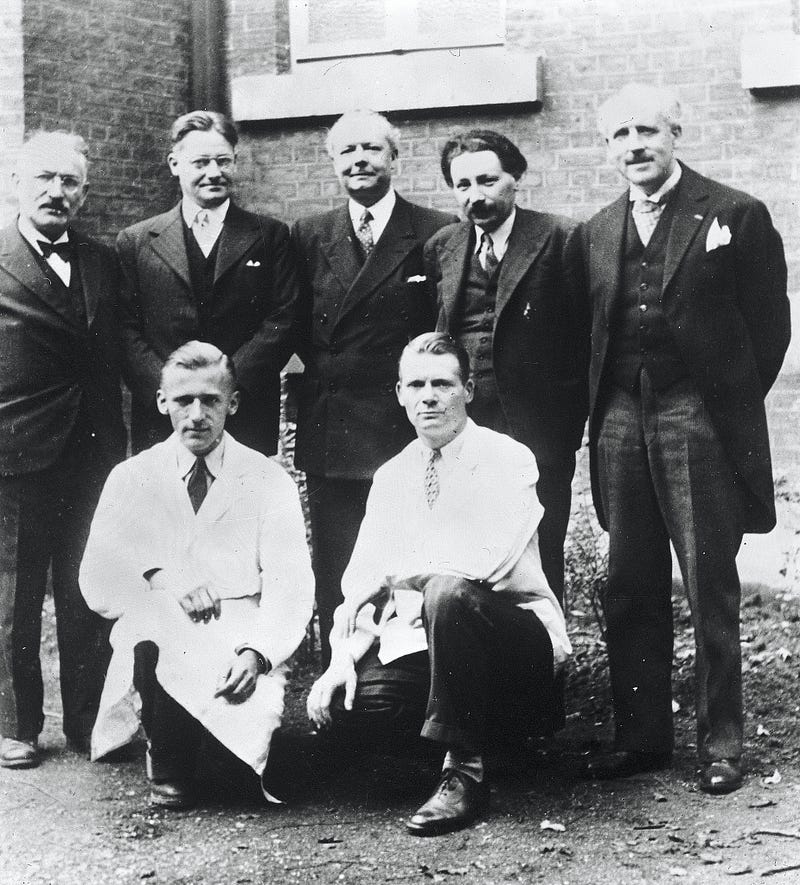The Untold Story of Antibiotics: The Hidden Pioneers of Penicillin
Written on
Chapter 1: The Legacy of Alexander Fleming
Alexander Fleming is often celebrated as the pioneer of penicillin, a groundbreaking antibiotic that revolutionized healthcare. He was awarded the Nobel Prize for his contributions, marking a significant milestone in medical history and saving countless lives through effective antibacterial treatments. However, the extent of Fleming's influence in this discovery is often misunderstood.

Who Was Alexander Fleming?
Born in 1881 into a Scottish farming family, Alexander Fleming initially did not set out on a medical path. After spending four years in a shipping office, he inherited a sum that allowed him to return to university. Although he originally aimed to become a surgeon, encouragement from peers led him to join Almroth Wright’s research team, where he developed an interest in bacteriology. His experience as a frontline medic in World War I exposed him to the troubling realities of wound infections, challenging his assumptions about the effectiveness of disinfectants.
A pivotal moment in Fleming's research occurred in 1922 at St. Mary’s Hospital, where he identified a natural antibacterial substance in human tissues, which he named lysozyme. This marked his first foray into the world of antibiotics, although the title of the first antibiotic is more commonly associated with penicillin.

The Discovery of Penicillin
Fleming's primary research involved staphylococci bacteria, which he cultivated from patient samples. In 1928, just before taking a vacation, he stacked his cultures and, upon returning, found that one plate had developed mold—specifically, Penicillium. The bacteria surrounding this mold were dead, sparking his curiosity.
Realizing the potential significance of this finding, Fleming cultivated the mold and extracted the fluid in which it thrived, testing it against various bacterial strains. His findings were promising, leading him to isolate penicillin, the first true antibiotic, which became a vital treatment for diseases like syphilis, pneumonia, and meningitis.
However, the excitement around penicillin was not shared by Fleming initially. He found its antibacterial effects to be inconsistent and limited, often using it only to eliminate unwanted bacteria in his experiments.

Florey and Chain: Pioneers of Penicillin Treatment
Despite Fleming's groundbreaking discovery, it was not until later that other researchers took an interest. Howard Florey and Ernst Chain from Oxford University began to study the antibacterial properties of penicillin more seriously. They quickly realized that oral administration was ineffective due to degradation in the stomach.
In 1940, they conducted a crucial experiment involving mice, where they injected a lethal dose of bacteria into eight subjects, treating four with penicillin. The results were striking: the treated mice survived, while the untreated ones did not. This led to the first human treatment in 1941, when a police officer named Albert Alexander became the first recipient of penicillin. Despite its difficult production process, he showed significant improvement, although he ultimately succumbed when supplies ran short.
The video titled "The accident that changed the world - Allison Ramsey and Mary Staicu" explores how discoveries like penicillin reshaped medical practices.
Nobel Prize Recognition
By 1941, penicillin production began, and by 1944, industrial-scale production was achieved, largely due to the efforts of Charles Pfizer and Company. This development ensured that Allied forces during World War II were well-supplied with this life-saving drug. However, the Nobel Prize awarded in 1945 to Fleming, Florey, and Chain often overlooks the collaborative nature of this achievement, with many textbooks still emphasizing Fleming's role.

Fleming’s Later Years and Legacy
Fleming famously remarked, “Nature makes penicillin; I just found it,” and he warned that misuse could lead to antibiotic resistance, a pressing concern today. He continued his research at St. Mary’s Hospital, receiving numerous accolades throughout his career, including a knighthood in 1944 and a professorship at the University of London. In 1999, Time magazine recognized him as one of the most significant figures of the 20th century.
Fleming passed away in 1955 from a heart attack, and he was interred in St. Paul’s Cathedral in London. His former laboratory has since been transformed into a museum, allowing visitors to learn about his life and contributions to medicine.
Attention All Readers!
As creators on Medium.com, we often face minimal compensation for our efforts. If you appreciate my work, please consider supporting me on my “Buy Me a Coffee” page. Your contributions can greatly assist in my mission to produce high-quality content. Thank you for your generosity!
